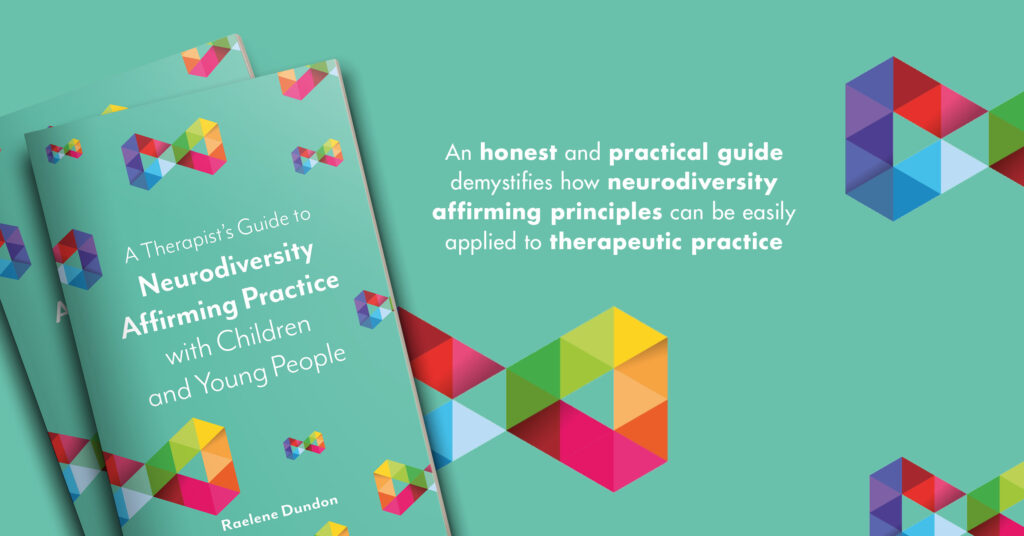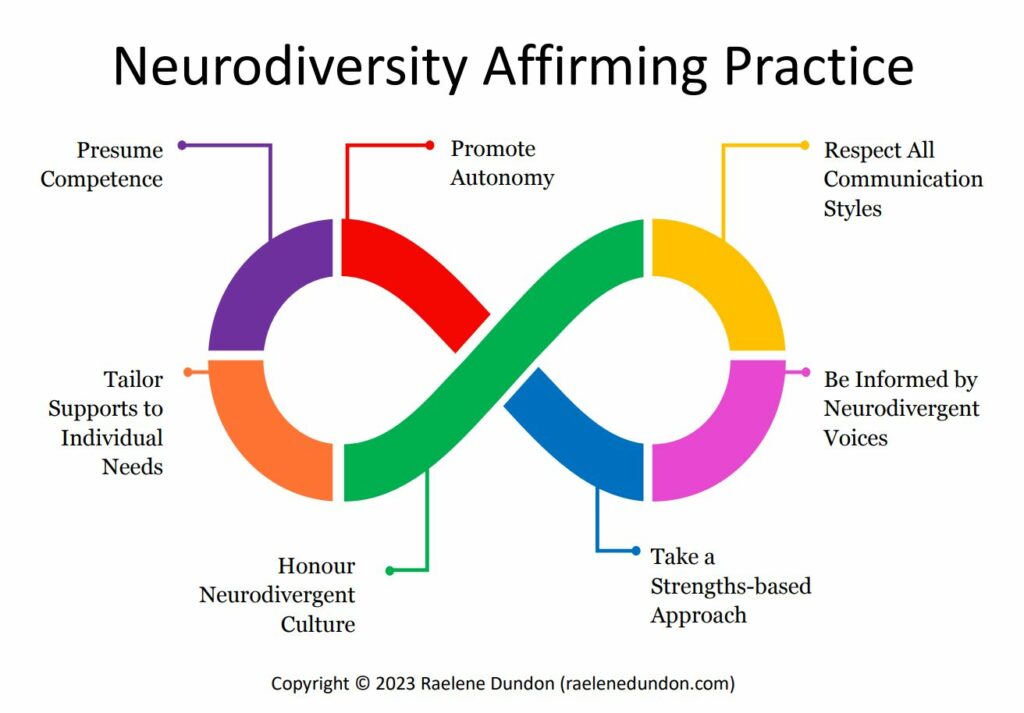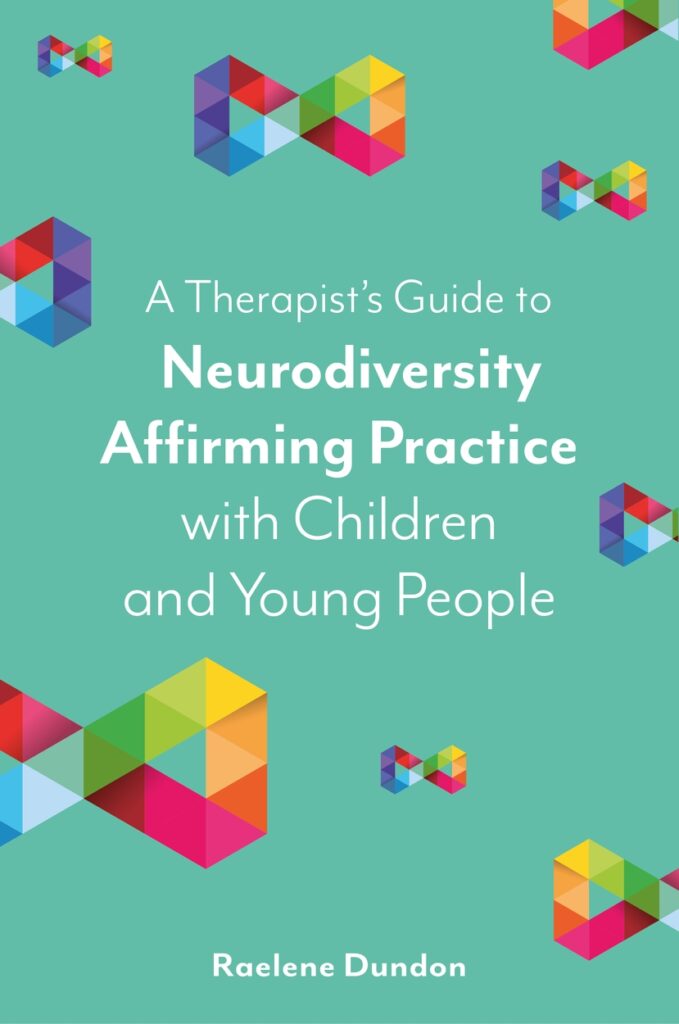Raelene Dundon is the author of A Therapist’s Guide to Neurodiversity Affirming Practice with Children and Young People and four other books with JKP. Raelene is a late diagnosed Autistic ADHDer and is an Educational and Developmental Psychologist and Play Therapist with over 15 years’ experience providing support to neurodivergent children and their families. In this blog, Raelene outlines her 7 strategies for ensuring your practice is neurodiversity affirming.

To be neurodiversity affirming is to acknowledge that all brain types, including those that are different to what society considers the norm, are equal in value and valid in their right to exist. This means valuing an individual’s strengths, accommodating their challenges and accepting differences in communication, social interaction, behavior, and learning. Many therapists I meet have heard something about neurodiversity affirming practice, and want to make changes to their approach, but they don’t know how. A helpful starting point is to be guided by seven key principles that can assist them to work in a neurodiversity affirming way.

1. Presume Competence
Presuming competence means assuming an individual can learn, think, and understand, even when we may not have evidence available to confirm this. We can do this by not talking about a client like they are invisible or infatalising them by speaking to them like they are babies. Presuming competence also involves refraining from making judgements based on preconceived ideas and instead, have high expectations for all the individuals we work with, and giving clients the opportunity to show us what they are capable of with the right supports in place.
2. Promote Autonomy
When we promote autonomy with children and young people, we are giving them the opportunity to make informed decisions about their care and supporting them to have a voice in all aspects of their lives. This includes ensuring our clients give assent or consent to participate in therapy whenever possible, guiding them to understand their own needs and advocate for themselves in therapy and other settings, and accepting “no” from them when they indicate they don’t want to do something or are experiencing discomfort.
3. Respect all Communication Styles
To be neurodiversity affirming regarding communication, we need to consider all communication as valid and acknowledge that there are many ways that individuals communicate beyond spoken language. Rather than insisting that children and young people “use their words” to communicate, or speak according to neurotypical conventions, we need to support them to express themselves in their own way whether that is with speech, gesture, written language, AAC or a combination of these.
4. Be Informed by Neurodivergent Voices
Evidence-based practice incorporates research, clinical knowledge and expert opinion, along with client preferences, to provide effective support, and who better to provide expert opinion than neurodivergent individuals themselves. In recent years there has been an increasing number of lived experience experts worldwide sharing insights into their specific neurotypes, providing information on their strengths and challenges, and informing us as clinicians on how we can better support them and the wider neurodivergent community. Listening to neurodivergent individuals and incorporating their lived experience and knowledge into clinical practice is an essential part of providing evidence-based neurodiversity affirming therapy.

5. Take a Strengths-Based Approach
A strengths-based approach not only considers an individual’s personal strengths, but also how conditions in their environment can be adapted to remove barriers and facilitate access to desired activities. Using a strengths-based approach is not about ignoring challenges; it is about recognizing that everyone has abilities and resources that can be used to help them achieve their goals.
6. Honor Neurodivergent Culture
As therapists, we can honor our client’s neurodivergence by giving them a safe space to be themselves, accommodating their needs and being accepting of their neurodivergent style of being. This includes adapting the environment to support sensory sensitivities, being flexible to accommodate neurodivergent communication and learning, and not pathologizing or trying to change neurodivergent qualities that do not cause distress or harm (e.g. stimming, reduced eye contact, etc.).
7. Tailor Support to Individual Needs
Tailoring an approach specifically to a client’s needs involves recognising that due to differences in sensory processing, cognition, communication, and perception, neurodivergent individuals experience the world differently to the neurotypical population, and as such are likely to need different therapeutic supports. We need to work with clients to understand their individual experiences and try different approaches or a combination of modalities to find what is going to suit them best to help them achieve their goals.
Adopting a Neurodiversity Affirming philosophy in our clinical practice does not happen overnight, but keeping these 7 principles in mind will help you on your way to creating lasting change.
You can find out more about Raelene’s book A Therapist’s Guide to Neurodiversity Affirming Practice with Children and Young People here and browse all of Raelene’s books here.